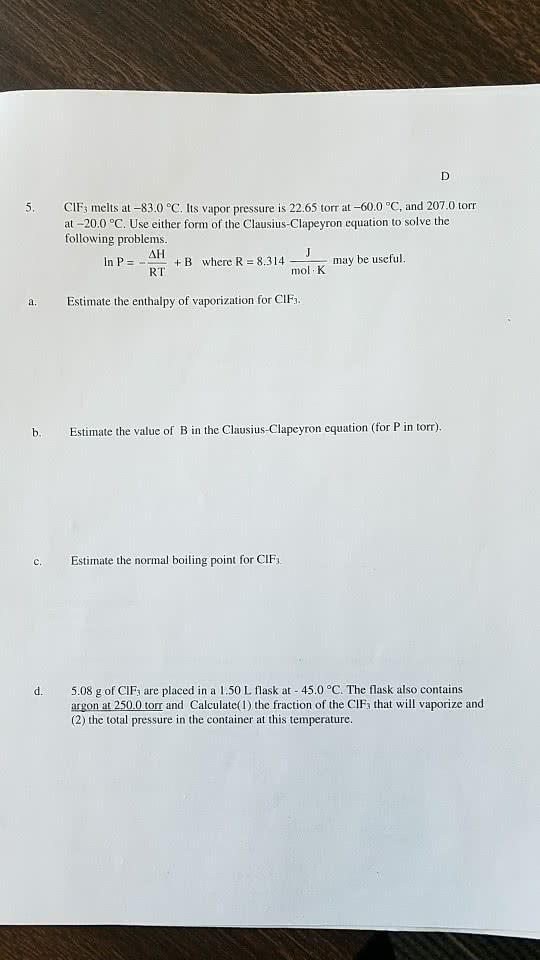Chemistry 2214A/B Lecture Notes - Lecture 17: Molar Volume, Indium Phosphide, Phase Transition
Document Summary
The gibb"s free energy g, of a system where two phases, liquid (l) and gas (g) are at equilibrium (a point on the curve). This is the slope of the boundary (generally + ve, there are exceptions) clapeyron equation in differential form. The result: is the integrated form of the clapeyron equation, good approx. for a small temp. range. It follows that ln p can be expressed as: A plot of lnp vs 1/t will yield a straight line with a slope = - b = hvap /r and an intercept = a. Chemical potential (molar gibbs energy) and phase stability (response to t and p changes) Temperature dependence of phase stability: all slopes (in the solid, liq. and gas phase) are ve, the steepest slope is found in the gas phase sm(g) > sm(l) > sm(s, discontinuity at phase transition (melting, boiling point)



